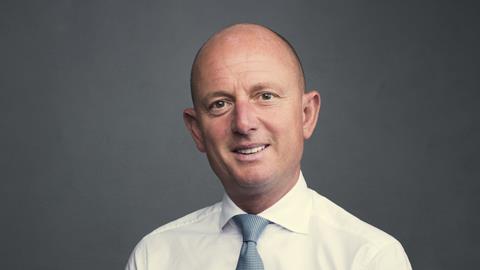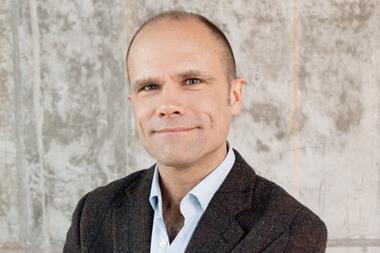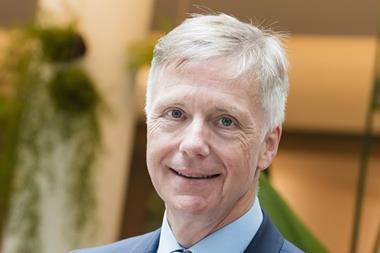Ed’s group CEO Steve Hearn on the forces transforming risk, insurance buying, and broking
Steve Hearn is no stranger to innovation or reinvention. It is just over a year since the CEO rebranded his company from Cooper Gay to Ed, in an unorthodox but snappy homage to Edward Lloyd, the owner of the coffee shop that spawned the Lloyd’s market in 17th century London.
Hearn wants to embrace the forces of disruption – much feared by many – in the insurance market. “The world is not just changing – it has already changed,” said Hearn, speaking on stage at a recent Brokerslink event in Marrakech, before sitting down to talk with StrategicRISK.
Hearn has held talks with Google bosses about what the future of insurance should look like. He recently met with the boss of a huge Chinese broker with a direct sales force of 500,000 people, which he says was an eye-opener on China’s future as a global insurance superpower.
His own firm, Ed, recently launched its own application, TradEd, for making commercial insurance placements. The app is already live for energy business, with a commitment to roll out all Ed’s product classes by the end of 2017.
On a personal level, Hearn’s recent adventures include a motor bike vacation in Morocco’s Atlas Mountains with his son and a former SAS special forces soldier for a guide. A few months earlier he ran seven marathons, on seven continents, in seven days. In short, Hearn is not a typical insurance broker.
Changing prices
The bad news is that prices are likely to rise for buyers of property covers with catastrophe exposure, Hearn thinks. But after years of price drops – particularly in the reinsurance market – a turn in the market cycle is long overdue. And 2017’s devastating hurricanes may have provided the force for such a pricing change.
“We’re talking about multiple losses,” says Hearn. “It’s not just hurricanes Irma, Harvey and Maria. There was also the Mexico City earthquake. All of that adds up in the aggregate to be more than $100bn. And a lot of that will fall in the London market.”
What happens next will be revealed at renewals. “It’s too early to say to what degree pricing will move at the January 1 renewals, but it will not be flat. Pricing on this business was down 10% last year. I would expect the rate for treaty reinsurance business to rise by 20-30%. I would also expect risk unexposed to these recent loss events to also pick up some rate,” says Hearn.
Hearn points to the combined ratio performance of the Lloyd’s market, which was barely breakeven at the end of last year. “One could say it was unsustainable even before Harvey and Irma turned up. However, all of this will also bring the industry’s distribution costs back into focus,” he says.
Risk managers buying covers cannot count on being insulated from the effects along the risk transfer chain, Hearn thinks. “The linkage between primary and reinsurance markets is now much shorter than it has ever been before,” he says.
He noted that most of the big reinsurers have diversified in recent years into primary business, setting up direct insurance subsidiaries. In previous market turns, there has been a lag of perhaps one year between reinsurance rate rises trickling down to hit primary market insurance buyers. “I think you’ll see the connection manifest itself much quicker this time,” says Hearn.
However, risk managers will be relieved to learn that price rises are likely to be temporary, Hearn thinks. The glut of excess capacity within re/insurance markets, with an inexhaustible supply via pension funds getting into the alternative reinsurance game – means that any rate increases will be short-lived.
Brexit blues
Hearn offered his personal view on Brexit when speaking at the Marrakech event. “I think it’s a disaster. I did not vote to leave the EU. I consider myself a global citizen and certainly a European,” he said, referencing his childhood growing up in several countries across continents.
He worries about the uncertainty created by the UK’s referendum decision to quit the European Union. “I have no idea. None of us know, and that is the point. We’re only just starting to see that as we get into very complicated negotiations,” he said. “I’ve given up looking to the long term. Two years ago, I could not have predicted that we’d be leaving the EU or that Donald Trump would be US President,” he added.
But the challenges faced by the insurance market in London are little to do with Brexit, he suggests. “The City is resilient to the challenges that have been thrown at it over centuries. One thing I don’t think we can do is attribute what is going on in the London market to Brexit. Brexit is an accelerant to change. London’s position in the [insurance] world had been changing for years,” said Hearn, speaking in Marrakech.
“The Latin American market that operates out of Miami is becoming a global market. Dubai is becoming a centre for satellite insurance. We’re seeing regional markets become global. London’s global position has changed. Our opportunity is to embrace that. I can bring you intellectual property and access to the marketplace,” he added.
The next 300 years
Hearn described a recent visit to China, “to a city I could not have pointed to on a map before”. There he met the chairman and CEO of a Chinese broker with a sales force of 500,000 people – about ten times the entire London insurance market workforce. He confessed he did not really understand why they were meeting at all.
His Chinese opposite number was blunt in his response: “Three hundred years ago, specialty insurance was invented in your city. The next three hundred years will be ours, and you are here to help build the bridge between the two.”
Hearn noted, for example, that Asian marine insurance is no longer coming to the London insurance market. “It doesn’t need to. There is more than enough Asian capacity to handle that risk. On the contrary, European marine risk is being placed directly into the Asian markets,” said Hearn.
Live data
Formula 1 racing and the aviation industry provided inspirations for Hearn’s view of the future of insurance. He described talking to super car company McLaren about their use of technology. Motor racing teams are computing a million variables per second to gain a winning edge. “We quickly started talking about aviation insurance with McLaren. A plane is jam-packed with live data,” Hearn said.
Jet engines are a source of huge volumes of live data, which gets fed to their makers at firms such as Rolls-Royce to track performance, safety and reliability. Hearn thinks the insurance sector needs to embrace that type of technology in its thinking.
“It’s possible to know a lot about the pilot, the wind on the runway he’s landing on, also the airline’s safety record, the volume of fuel being carried, and whether the wind is blowing in a direction the pilot is uncomfortable with. Capital pricing live to the risk is what will happen. That is the future,” said Hearn.
Meeting with senior figures at Google, Hearn said he asked them whether such a vision was realistic for the future of insurance. “After hearing me out, and before asking any other questions, I asked them ‘do you think we’ve been smoking dope?’” said Hearn. “And they replied, ‘No, that is the opportunity.’”





















No comments yet